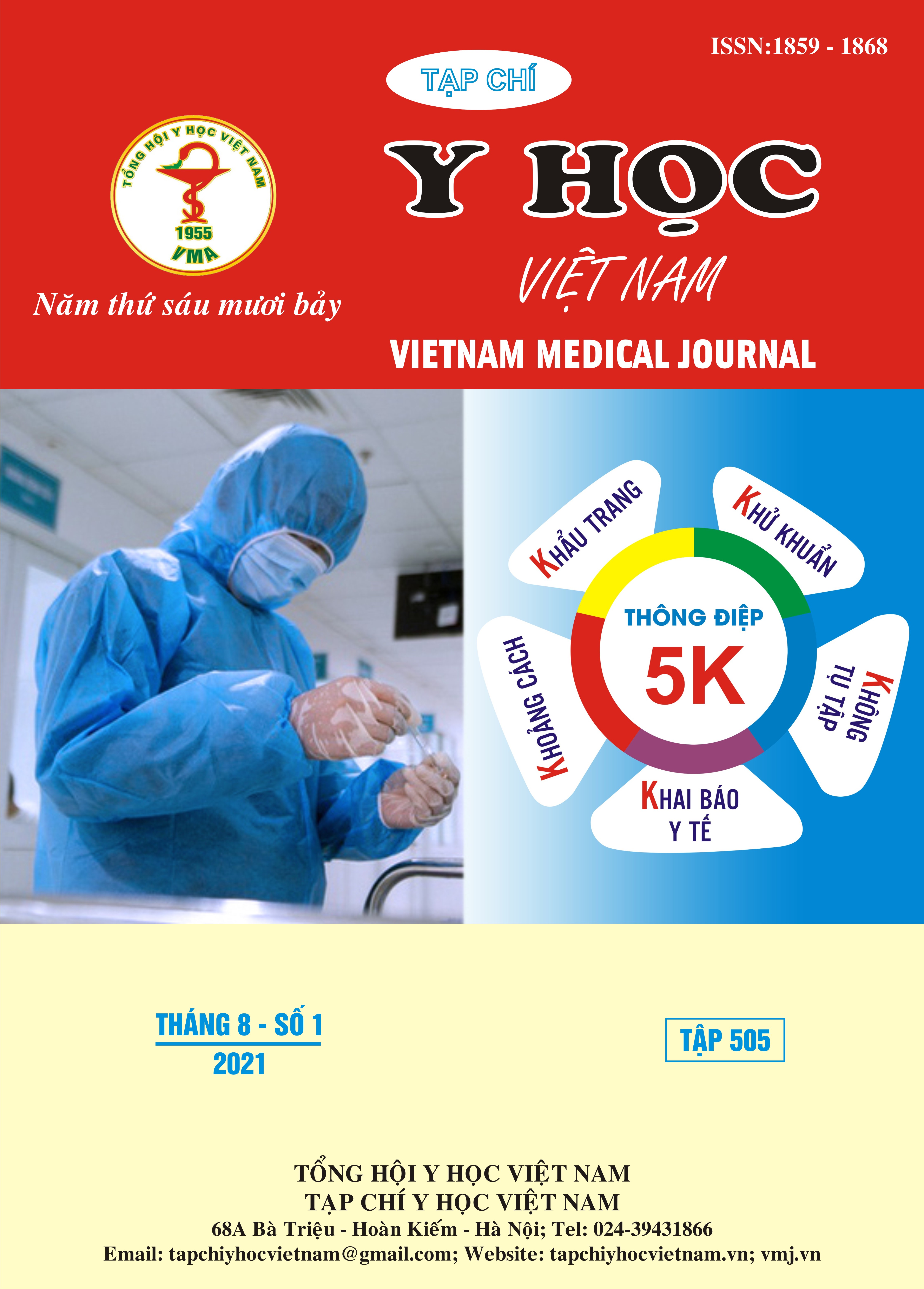COMPLICATIONS AFTER SURGICAL TREATMENT OF ZYGOMATICOMAXILLARY COMPLEX FRACTURES
Main Article Content
Abstract
Zygomaticomaxillary complex fractures are common maxillofacial injuries that can lead to cosmetic loss and functional impairment. In fact, zygomatic complex reconstruction is still a challenge for maxillofacial surgeons because of its important position in facial aesthetics and complications and sequelae after surgical treatment. Objectives: Describe and analyze complications after surgery for zygomaticomaxillary complex fractures. Materials and Methods: Review and analysis of data on complications after surgery to treat zygomatic complex fractures from articles, theses and theses on Pubmed, Google Scholar, EBSCOhost databases Research Databases, library of Hanoi Medical University. Results: Synthesized in 926 studies filtering the title and introduction on 3 databases: Pubmed, Google Scholar, ESBCO host Research Databases were 72 studies. Continuing to evaluate documents in detail, 7 documents met the criteria for analysis: 2 prospective studies and 5 retrospective studies. The results of the analysis showed that: The most common complication recorded in the studies was paresthesia. Complications of the eye are commonly diplopia, enophthalmos, exophthalmos, etc. Complications of occlusal may be limited mouth opening. In addition to the typical complications, surgery for zygomaticomaxillary complex fractures can also experience complications of a common bone-fusion surgery such as infection, plate exposure, bad scars, etc. Complex and displaced fracture lines have a higher complication rate than simple and non-displaced fracture lines. The lower orbital margin incision has a higher complication rate than other incisions. Conclusion: Common complications after surgical tretment of zygomaticomaxillary complex fractures include: infection, plate exposure, facial asymmetry, numbness, paresthesia, diplopia, bad scars, limited mouth opening, etc. Some factors are related to complications after surgery in the treatment of zygomaticomaxillary complex fractures such as location, nature of the fracture line, position of incision in surgery, etc.
Article Details
Keywords
complication, surgical treatment, zygomaticomaxillary complex fractures, a review
References
2. Bartoli D, Fadda M.T, Battisti A et al. (2015), Retrospective analysis of 301 patients with orbital floor fracture. Journal of Cranio-Maxillo-Facial Surgery. 43(2):244-7 (https://doi.org/10.1016/j.jcms.2014.11.015).
3. Mueller CK, Zeiß F, Mtsariashvili M et al. (2012Correlation between clinical findings and CT-measured displacement in patients with fractures of the zygomaticomaxillary complex. Journal of Cranio-Maxillo-Facial Surgery; 40: e93-e98 (https://doi.org/10.1016/j.jcms.2011.05.009).
4. Chattopadhyay CPK, Chander MGM (2009): Management of Zygomatic Complex Fracture in Armed Forces. Med J Armed Forces India. 65(2):128-30 (https://doi.org/10.1016/S0377-1237(09)80124-X).
5. Forouzanfar T, Salentijn E, Peng G et a. (2013). A 10-year analysis of the ‘Amsterdam’ protocol in the treatment of zygomatic complex fractures. Journal of Cranio-Maxillo-Facial Surgery. 41(7):616-22 (https://doi.org/10.1016/j.jcms.2012.12.004).
6. Trivellato PFB, Arnez MFM, Sverzut CE (2011). A retrospective study of zygomatico-orbital complex and/or zygomatic arch fractures over a 71-month period. Dental Traumatology; 27: 135–142 (https://doi.org/10.1111/j.1600-9657.2010.00971.x).
7. Salentijn EG, Bergh B, Forouzanfar T (2013). A ten-year analysis of midfacial fractures. J Craniomaxillofac Surg; 41(7):630-6 (https://doi.org/10.1016/j.jcms.2012.11.043).
8. Melicher J, Nerad JA (2012). Zygomaticomaxillary complex fractures. Smith and Nesi’s Ophthalmic Plastic and Reconstructive Surgery: Springer:265–270 (https://doi.org/10.1001/archfacial.2011.1415).
9. Kumar P, Godhi S, Lall AB, et al. (2012). Evaluation of neurosensory changes in the infraorbital nerve following zygomatic fractures. J Maxillofac Oral Surg;11:394–399 (https://doi.org/10.1007/s12663-012-0348-8).


